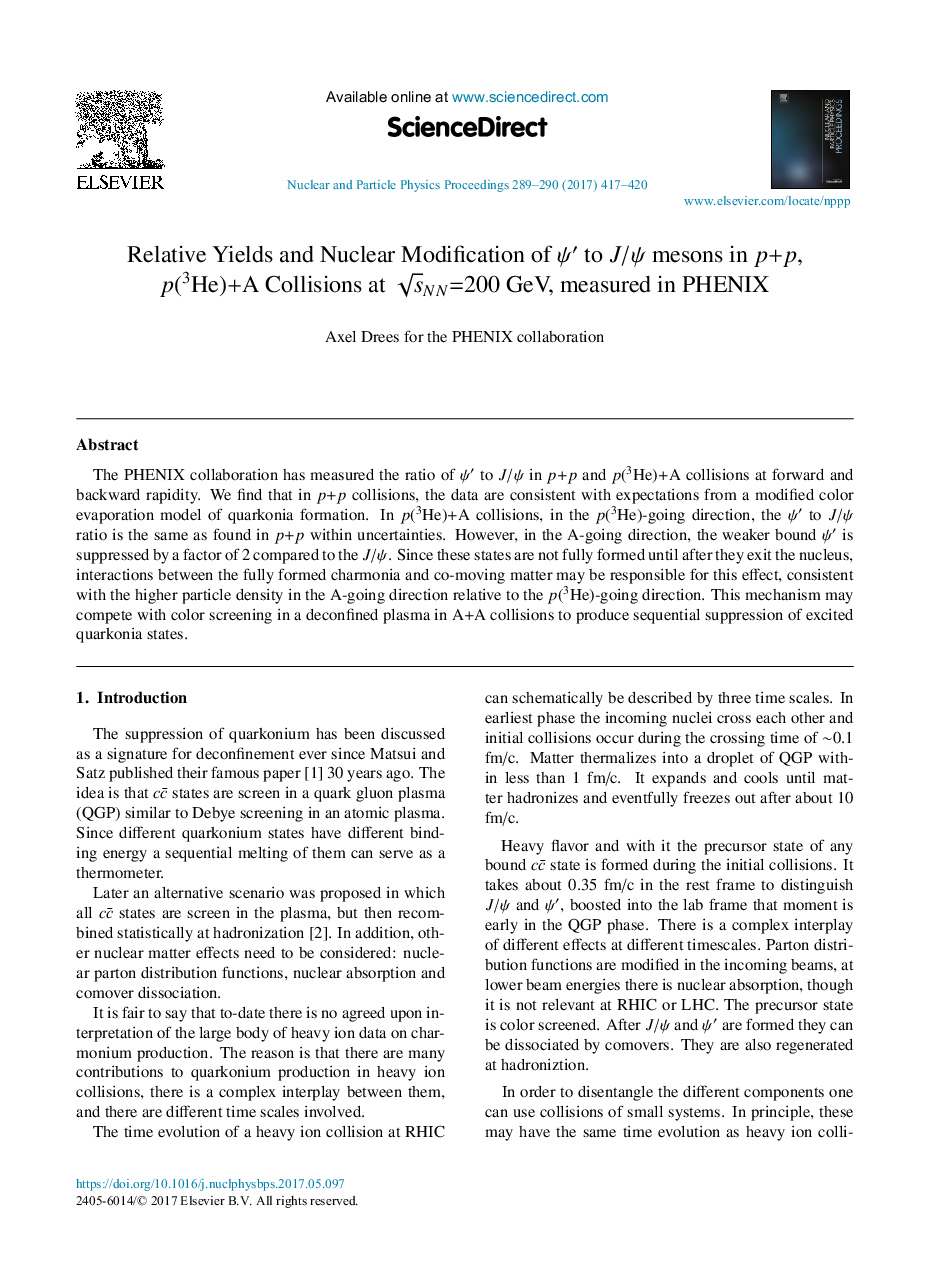| Article ID | Journal | Published Year | Pages | File Type |
|---|---|---|---|---|
| 8182587 | Nuclear and Particle Physics Proceedings | 2017 | 4 Pages |
Abstract
The PHENIX collaboration has measured the ratio of Ïâ² to J/Ï in p+p and p(3He)+A collisions at forward and backward rapidity. We find that in p+p collisions, the data are consistent with expectations from a modified color evaporation model of quarkonia formation. In p(3He)+A collisions, in the p(3He)-going direction, the Ïâ² to J/Ï ratio is the same as found in p+p within uncertainties. However, in the A-going direction, the weaker bound Ïâ² is suppressed by a factor of 2 compared to the J/Ï. Since these states are not fully formed until after they exit the nucleus, interactions between the fully formed charmonia and co-moving matter may be responsible for this effect, consistent with the higher particle density in the A-going direction relative to the p(3He)-going direction. This mechanism may compete with color screening in a deconfined plasma in A+A collisions to produce sequential suppression of excited quarkonia states.
Related Topics
Physical Sciences and Engineering
Physics and Astronomy
Nuclear and High Energy Physics
Authors
Axel Drees, PHENIX collaboration PHENIX collaboration,
